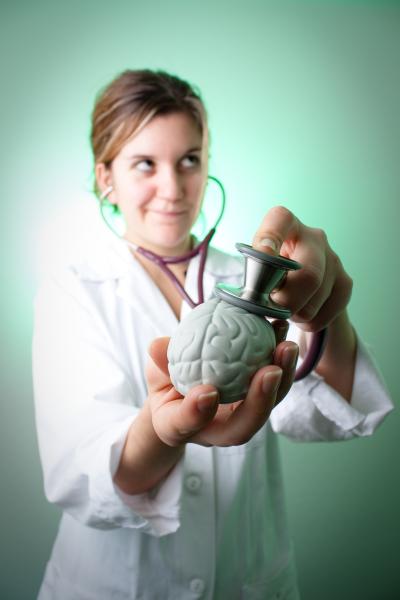Most of us are familiar with the stereotypical seizure perpetuated by Hollywood where the protagonist convulses in a dramatic, often traumatizing way. Usually while operating a vehicle or in a capacity where secondary adverse consequences from head injury, flailing or drowning from lost consciousness prevails. In the real world, epilepsy and its varying manifestations traverse a wide spectrum ranging from global to more focal features. Enter the realm of the silent seizure, often plaguing the sickest of patients in the intensive care unit setting and with the most obscure of presentations. These also produce abnormal brain rhythm disturbances, but occur without obvious physical signs and require cumbersome testing which can delay diagnosis, thereby delaying proper treatment.
New technology nicknamed the “brain stethoscope” hopes to facilitate a solution to this problem by simplifying detection of seizure activity by the most untrained (e.g. medical students, nurses) so as to circumvent the practical challenges of the current labor-intensive needs of collecting this data. Researchers just published their findings, in the journal Epilepsia, upon testing this device which melds music and the mind. This will be discussed shortly.
As it stands, in the hospital setting, for instance, if a physician suspects seizure activity, then a neurologist typically is involved to determine type, intensity, degree and will consult on effective therapies. Technicians specifically trained to perform electroencephalograms (EEGs) - just like electrocardiograms do for the heart, an EEG monitors the electrical activity of the brain - need to come to the bedside to aid in such detection by using special glue, electrodes with elaborate mapping or sensors and equipment designed to transfer this information into EEG readings that can then be interpreted by specialists, usually neurologists.
But, this involves many steps and access to such technicians and neurologists can be a challenge for institutions that are more remote or in the community. Even busy, well-staffed, large tertiary care academic centers are not immune to these issues. When time is of the essence, the quality of care can be diminished if a seizure diagnosis is not prompt and rapidly stopped with medication. If it is unnoticed and protracted, damage can be done to the brain. The result can pose short- and long-term harm and disability.
So, a team from Stanford opted to explore a solution that integrated music, medicine and their respective faculty members. Neurologists in partnership with a professor and specialist in computerized music created an algorithm that transforms brain waves into sound. The device encompasses a wearable headband portion that gathers the brain’s electrical activity to transmit to a separate remote that once the brain stethoscope button is pressed emits computer-generated singing-like sound for the user to discern as normal or abnormal.
According to the study authors, the ability for those who are untrained to read an EEG correctly approaches 50%, but their work reflects that number surpassed 95% when the brain stethoscope was employed by the non-specialist (which in this case were medical students and nurses). How this can be implemented in practice is not yet known and is being further studied by this team.
Though it is early, there might be other important uses for such a technology - ones that could even save overall costs. Among them, is in pediatrics. It is very common for young children as they develop, especially during their non-verbal or toddler years, to exhibit jerky movements or staring spells to name a few -- some of this behavior is normal, some is pathological. They can have instances of rigidity or repetitive movements that often fret parents. The term near-miss sudden infant death syndrome or infantile apnea evolved into the alarming apparent life-threatening events (ALTE) which then became brief resolved unexplained event (BRUE) to reflect scary, nonspecific, quick instances that are routinely described as some combination of sudden cyanotic discoloration, loss of muscle tone and breathing cessation. These can warrant elaborate medical work-ups that include hospital admission. Ruling out seizure disorders can be a standard part of the assessment.
Though these are characteristically dramatic and frightening, there is a substantial swath of events that are mild, stable in nature, less concerning and with a low likelihood of recurrence (in particular for the low risk infant). Determining early, if possible, if these are meaningful or potentially reflective of seizure activity could be an area where a technology like the brain stethoscope could do much good in the outpatient setting. Not only could it calm fears of parents, but it could also prevent further unnecessary testing in the appropriate circumstances which, in the end, helps minimize the healthcare burden. It could provide a useful screening for more targeted strategies.
We are in exciting, innovative times. Separating the wheat from the chaff in technology is the challenge, so when it comes to devices ones that solve legitimate problems tend to win in the long haul. This one holds promise, not just in the lab but at the bedside. Though not a substitute for the traditional, gold standard EEG, it could prove to be an effective triage tool in the subclinical seizure where urgent intervention is required. Time will tell whether its use can expand beyond this arena.




